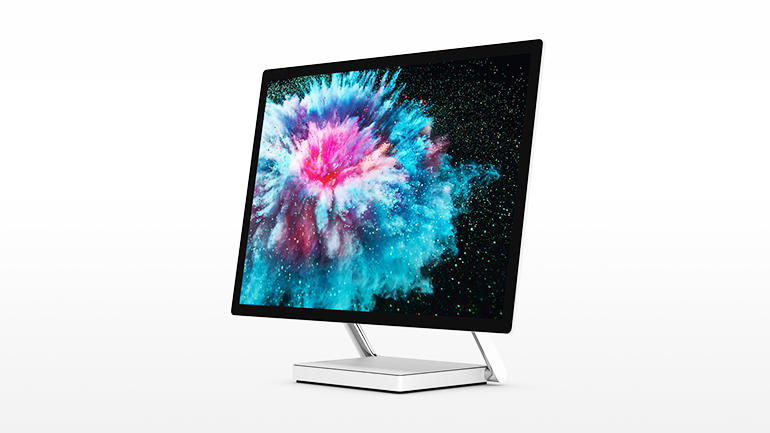'ZDNET Recommends': What exactly does it mean?
ZDNET's recommendations are based on many hours of testing, research, and comparison shopping. We gather data from the best available sources, including vendor and retailer listings as well as other relevant and independent reviews sites. And we pore over customer reviews to find out what matters to real people who already own and use the products and services we’re assessing.
When you click through from our site to a retailer and buy a product or service, we may earn affiliate commissions. This helps support our work, but does not affect what we cover or how, and it does not affect the price you pay. Neither ZDNET nor the author are compensated for these independent reviews. Indeed, we follow strict guidelines that ensure our editorial content is never influenced by advertisers.
ZDNET's editorial team writes on behalf of you, our reader. Our goal is to deliver the most accurate information and the most knowledgeable advice possible in order to help you make smarter buying decisions on tech gear and a wide array of products and services. Our editors thoroughly review and fact-check every article to ensure that our content meets the highest standards. If we have made an error or published misleading information, we will correct or clarify the article. If you see inaccuracies in our content, please report the mistake via this form.
Microsoft Surface Studio 2 review: A powerful digital drawing board


Microsoft Surface Studio 2
pros and cons
- High-definition display with 3:2 aspect ratio
- 'Zero gravity hinge' with drawing-board mode
- Surface Pen included
- Stronger CPU, GPU and SSD performance
- Expensive
- Only one CPU option available
- Limited build-to-order options
- No expansion slots
- Editors' review
- Specs
After a slow start, Microsoft's Surface range of laptops has proven to be highly successful in recent years. And, perhaps more importantly, the design of the Surface has influenced the wider PC industry as well, giving rise to a new generation of convertible devices that can be used as either a tablet or a laptop.
However, Microsoft hasn't been quite so sure-footed in its attempts to extend the Surface range into the all-in-one (AIO) desktop arena. Originally unveiled in late 2016, but not shipping until later in 2017, the Surface Studio was very much an attempt to appeal to creative users, with an elegant all-in-one design that was clearly influenced by Apple's iMac.
The Surface Studio got some impressive reviews, but Microsoft seemed unsure how to promote this new device and a little out of its comfort zone in the creative industries. It was almost as if the Surface Studio was primarily a proof-of-concept device, intended to introduce Microsoft to a creative audience that has traditionally been steadfastly loyal to Apple. But, at the start of 2019, Microsoft has launched the Surface Studio 2, a more powerful update designed to make a serious assault on creative markets.
Features & design
The original Surface Studio was more than just an iMac clone, and introduced some attractive ideas of its own that remain central to the design of the Surface Studio 2. Like its predecessor, the Surface Studio 2 has a 28-inch display with 4,500-by-3000 resolution (192dpi), and a 3:2 aspect ratio that's intended to match traditional print-based design methods. That's a clear contrast with the 27-inch display and 16:9 aspect ratio of the iMac and iMac Pro, which have been increasingly focused on video editing in recent years.
The 28-inch Surface Studio 2 can stand tall or adopt a drawing-board mode thanks to its 'zero gravity hinge'.
However, the display of the Surface Studio 2 does support both the standard sRGB colour-space for print and web design, as well as DCI-P3 for professional-level video-editing (along with a 'vivid' mode for films and entertainment). And, with a more powerful quad-core Core i7 processor in this update, the Surface Studio 2 is powerful enough to handle video editing as well as more traditional design and graphics work.
Another feature that proved popular with the original Surface Studio was the 'zero gravity hinge' that allows the touch-sensitive screen to be tilted backwards so that designers and illustrators can use it as a kind of digital canvas along with the Surface Pen stylus (included) and the innovative — but optional — Surface Dial.
SEE: 20 pro tips to make Windows 10 work the way you want (free PDF)
Top ZDNET Reviews
Microsoft's marketing team still doesn't seem entirely at home with the design-oriented features of the Surface Studio 2, telling ZDNet rather vaguely that the display on this new model 'provides more colours' and that the Surface Pen was 'more sensitive'. We suspect there's been some fine-tuning of the contrast ratio and luminosity of the display, which certainly looks strikingly bright and colourful, although we're still trying to get more precise technical details from Microsoft.
The Surface Studio 2 has four USB 3.0 ports, a full-size SD card reader, one USB-C port, a 3.5 mm headphone jack and a Gigabit Ethernet port.
The Surface Pen also felt impressively responsive, allowing us to create smooth, flowing brush strokes without a hint of lag, even when using quite complex brush styles and effects. That combination of adjustable display and the Surface Pen certainly provides an attractive alternative to a conventional graphics tablet, and the Surface Studio 2 will definitely appeal to designers and illustrators who do a lot of work by hand.
There's one other minor, but welcome, addition to the Surface Studio 2: the DisplayPort interface of the previous model has now been replaced by a single USB-C port.
Pricing & options
While the outward design of the Surface Studio 2 hasn't changed much, there have been more significant changes on the inside. Microsoft has always been rather coy about the processing power of the Surface Studio, but our own tests at the time revealed that the original Surface Studio — which remains on sale, although stocks now appear to be running low — was based on 6th generation Core i5 and Core i7 processors, using hybrid HD/SSD drives and Nvidia's GeForce GTX 900 series of mobile GPUs.
The 2019 update eliminates the entry-level Core i5 option in favour of three configurations based on the 8th generation quad-core Core i7-7820HQ running at 2.9GHz (up to 3.9GHz with TurboBoost). Prices for the Surface Studio 2 now start at £3,549 (inc. VAT; £2,957.9 ex. VAT, or $3,499) for a model with 16GB of RAM. That's the same price as last year's Core i7 configuration, although the Surface Studio 2 does provide better value for money as it also updates both storage and graphics to the tune of a 1TB SSD and an Nvidia GeForce GTX 1060 with 6GB of dedicated video RAM.
We tested the second configuration, which doubles the RAM to 32GB and adds a GeForce GTX 1070 (8GB VRAM) for £4,249 (inc. VAT; £3,540.83 ex. VAT, or $4,199). There's one final option as well, with a 2TB SSD that brings the total price to £4,749 (inc. VAT; £3,957.50 ex. VAT, or $4,799).
Performance
With our review unit coming in at well over £4,000, the Surface Studio needs to earn its keep, and its up-to-date Core i7 processor, solid-state drive and high-end GPU compare well with all-in-one rivals such as Apple's iMac Pro.
The Surface Studio scored 4,632 for single-core performance when running the Geekbench 4 CPU test, and 15,107 for multi-core performance. Graphics performance is strong too, hitting 110fps under the Cinebench R15 OpenGL test, while the SSD achieved speeds of 940MB/s and 2GB/s for write and read performance respectively. There's no doubt that the Surface Studio 2 can handle a wide range of graphics and design applications.
In contrast, the iMac Pro starts at £4,899 (inc. VAT; £4,082.50 ex. VAT, or $4,999) and while its 8-core Xeon W processor is far ahead on raw processor performance with single- and multi-core scores of 5,134 and 31,400 in Geekbench 4, its 120fps in Cinebench R15 is only 9 percent faster than the Surface Studio 2. Admittedly, the 5K display of the iMac Pro, along with its 8-core processor — with up to 18 cores available as build-to-order options — make it a better option for intensive tasks such as 4K video-editing, but the tilting display and stylus of the Surface Studio 2 will certainly make it very attractive for 2D graphics and design work.
Conclusions
Microsoft may be a relative newcomer in the creative market, but the company has got the basics right with the Surface Studio 2. It may not have the raw computing power of the iMac Pro for high-end video editing, but the Surface Studio 2 does provide a more affordable alternative for 2D graphics and design work. And, with its adjustable display and stylus, the Surface Studio 2 offers designers a versatile digital drawing board that simply isn't available from rival AIO desktop PCs.
RECENT AND RELATED CONTENT
Apple iMac Pro (late 2017) review: An AIO for the Pro crowd
It's seriously expensive, but Apple has finally released an iMac that can handle VR and other high-end content-creation tasks.
Dell Precision Workstation AIO 5720 review: A professional-level all-in-one with excellent GPU performance
The Precision AIO 5720's high-end graphics performance makes it well suited to tasks such as photography, design and illustration work. It's also competitively priced.
Lenovo ThinkCentre M910z AIO review: Unassuming design, strong performance for the price
The ThinkCentre M910z is neither sleek nor super-fast, but it's a thoroughly capable office PC that provides strong performance for a variety of tasks at a highly competitive price.
HP EliteOne 1000: A 34-inch curved all-in-one monster
In regular business scenarios, the HP EliteOne 1000 will comfortably handle most workloads, but it should be capable of so much more.
Microsoft Surface Studio review: An appealing all-in-one for creatives, but the price is high
It has a versatile 28-inch display, but the Surface Studio will need a serious price reduction if it's to compete with the latest high-end AIOs on the market.
Best Desktops for 2019 (CNET)
Our editors hand-picked these products based on our tests and reviews.
Read more reviews
- UAG Monarch Galaxy S10 Plus hands-on: The best UAG case for Samsung's latest flagship
- Totallee matte case for Samsung Galaxy S10 and S10 Plus: Ultra thin scratch protection
- Samsung SmartThings Wifi review: Mesh networking with a smart home twist
- Galaxy S10 Plus hands on review: Samsung delivers worthy rival to iPhone XS Max
- Arlo Ultra, hands-on: A premium security camera with expansion potential